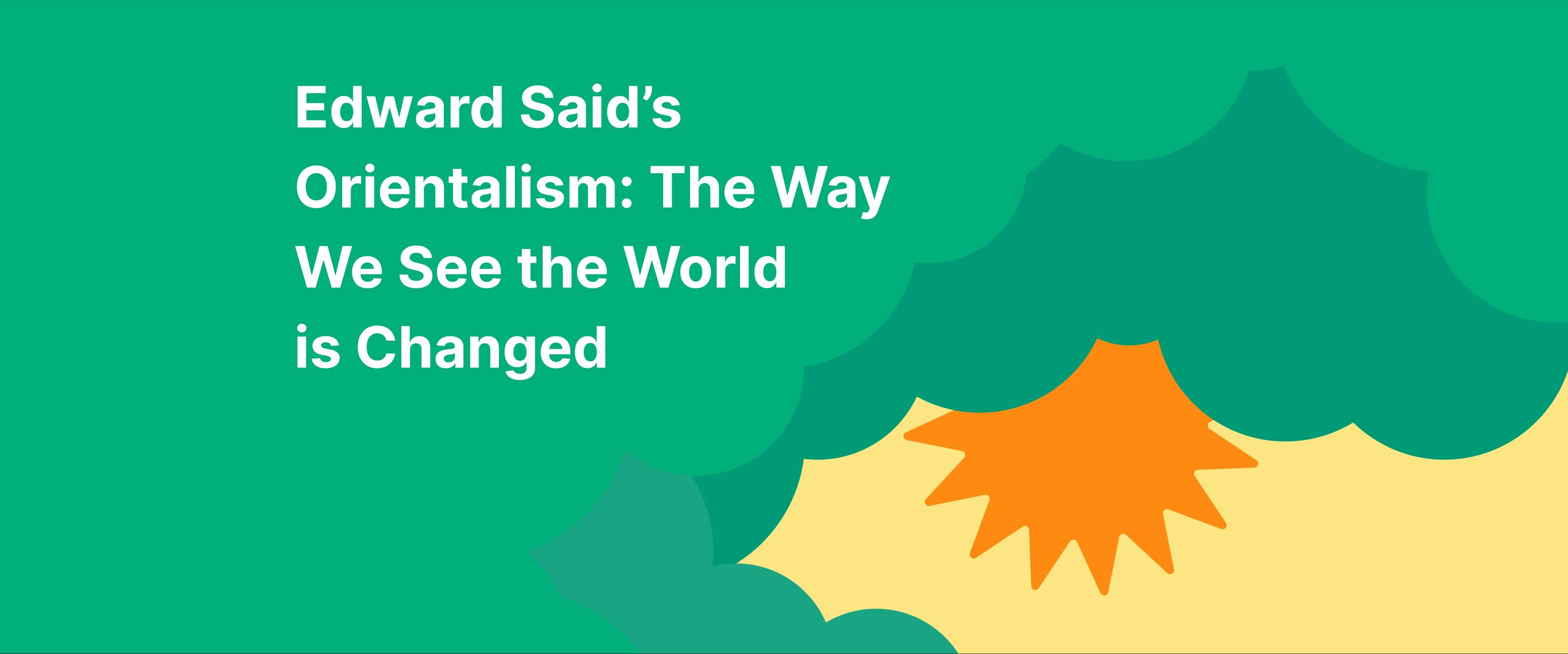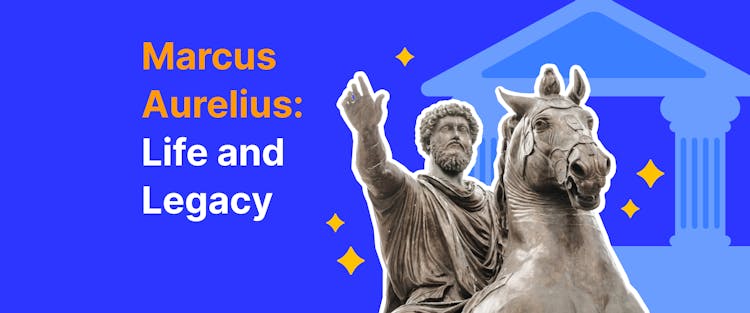Oriental studies, also known as Orientalism, is the study of Eastern cultures. This term is often linked to the styles and features of architecture, music, and art, particularly in art history. Orientalism also describes how the West viewed the East during the time of Western imperial control and colonial expansion over Eastern lands.
The East is exotic, mystical, and dangerous.
The West is rational, progressive, civilized.
Did you genuinely arrive at that conclusion on your own, or was it a belief instilled in you by others?
Edward W. Said (1935–2003) introduced the concept of Eastern perception by the West. He was a Palestinian-American professor at Columbia University, a literary critic, and an influential public intellectual.
Here's what you'll learn in this article:
What 'Orientalism' is, according to Said
The main ideas of the 'Orientalism' publication
The way Orientalism has influenced art over time
Criticism regarding Said's theory
How 'Orientalism' has influenced modern ideas about the East
Edward Said's definition of Orientalism
Said helped people understand the lasting effects of colonialism by showing how power works and stressing the need for dialogue and understanding between cultures. Said's analysis of Oriental subject matter changed how researchers discuss literary theory, literary criticism, Middle Eastern studies, and cultural studies.
In his most famous work, 'Orientalism' (1978, New York), Said examined the interaction between Western and Eastern cultures. He viewed Orientalism as a coherent and powerful ideological system of the Western world's understanding of the Orient (the countries of the East, especially East Asia).
Said argued that this framework has largely determined and continues to influence relations between Eastern and Western cultures, affecting identity formation and political decision-making.
He states that anyone who teaches, writes about, or studies topics related to the Orient, regardless of whether they are anthropologists, sociologists, historians, or philologists, is considered an Orientalist.
Stereotypical image of the East
In 'Orientalism', Said shows how the West created a stereotypical, ideologized image of the East to justify colonial domination. In response, some theorists began to speak of Occidentalism — the stereotyping of the West by the East. However, Said rejected this mirror-like comparison.
The roots of this concept go back centuries. In Western art, Orientalism manifested as an unrealistic, superficially perceived phenomenon of non-European culture as exotic, often illogically using elements only from Arab-Muslim culture and architecture of Muslim countries close to Europe.
As Said argues, Orientalism explains the motives of the world's political history. Still, he tries to avoid political analysis as much as possible and strives to adhere to intellectual criticism.

Main ideas in Edward Said's 'Orientalism'
"Arabs, for example, are thought of as camel-riding, terroristic, hook-nosed, venal lechers whose undeserved wealth is an affront to real civilization. – Edward W. Said, 'Orientalism'
Said discusses the racist and stereotypical images of Arabs that appear in Western culture. His focus is not on critiquing Arabs but on criticizing how colonial ideas have shaped these images.
The main point of Said's Orientalism is that political imperialism influences many areas of study, art, and science. This connection is so strong that we cannot overlook it, whether looking at it from an intellectual or historical perspective.
1. Colonialism and culture are not separate
Said showed the connection between the discourse of the "East" and imperialism. He examined how Western scholars, philosophers, intellectuals, and artists throughout history viewed Eastern cultures, especially Islam.
He revealed that strong prejudices often shaped their work. He showed how the simple and distorted image of the East created by Europeans was meant to support their political power, intellectual superiority, and colonial control.
It wasn't always like this. Before World War II, issues of prejudice were not widespread. Modern postcolonial studies emerged in global discourse after World War II, when most European colonies, especially in Asia and Africa, gained independence. The postcolonial experience includes and reflects colonial history as part of a single cultural phenomenon.
However, in the second half of the 20th century, Said became a revolutionary in cultural history. He studied the East and considered conquest not just in terms of land and territory, but also as capturing people's ideas.
2. Said's call for independent self-expression in Eastern culture
In a sense the limitations of Orientalism are, as I said earlier, the limitations that follow upon disregarding, essentializing, denuding the humanity of another culture, people, or geographical region. ― Edward W. Said, 'Orientalism'
Said's Orientalism suggests an inherent inequality between the West and the East. According to his perspective, Eastern cultures cannot represent themselves independently, so the West must do so through scientific research, systematic analysis, travel, literature, and art.
Said notes that Orientalism's formation is subjective. He doesn't blame the European and Western communities for having a negative attitude toward the East. Instead, he wants to explore why the East became seen as something to be "Orientalized." This way of thinking led to differences in how people viewed the East, which contributed to the rise of imperialism, colonialism, and racism in the world.
The first step is realizing that oriental images are distorted and rethinking them critically. Said emphasizes that knowledge is power, so Eastern peoples must create research, cultural, and educational projects that will be an alternative to the Western vision. He does not call for isolation; he calls for a dialogue between cultures on equal terms, without hierarchy.
3. The West studies the East to have power over it
"Knowledge of the Orient, because generated out of strength, in a sense creates the Orient, the Oriental, and his world. In short, Orientalism is a Western style for dominating, restructuring, and having authority over the Orient." – Edward W. Said, 'Orientalism'
In the introduction to 'Orientalism,' Said points out that imperialist countries encourage curiosity in their societies about places where they have power. This influence affects how people view those regions. Cultural dominance plays a significant role in the strength and persistence of Orientalism.
The West often borrows elements of Eastern cultures — clothing, ornaments, religious symbols — without understanding their meaning. And this leaves Western interpretations of events, religions, and traditions dominant in global discourse.
Knowledge is not neutral — it is an instrument of power. Oriental stereotypes are not just funny images — they legitimize control because the West supposedly knows better what is "right."

Orientalism as a system of knowledge and how it has been layered over time
The term Orientalism in the art of Western European countries had nothing in common with scientific oriental studies. The word Orientalism denotes a direction in art of the 19th century, most reflected in the art of France. However, the depiction of Muslims, Turks, or Africans in turbans appeared in the art of Western Europe much earlier, back in the Middle Ages.
These origins are primarily associated with the separation line between East and West, drawn, in particular, in Homer's 'Iliad,' Aeschylus' 'Persians,' or Euripides.
Was the 19th century a time of acceptance of Eastern cultures?
"To have such knowledge of such a thing is to dominate it, to have authority over it." — Edward W. Said, 'Orientalism'
Egypt
The period of political domination of Western Europe over the East has been ongoing since the 18th century. During Napoleon Bonaparte's military campaign in Egypt from 1798 to 1799, he brought along French scientists and artists. This helped make his military operation seem more about civilizing the area. After winning, Napoleon set up his base in Cairo. While he was there, he became interested in the Egyptian religion and focused on the idea of equality among all people in society.

This, however, contributed to the emergence of fashion in Egyptomania and, to a lesser extent, Turkish style. A new wave of interest in Arab Orientalism occurred during the Greek War of Independence with the Ottoman Empire (1821-1829).
Japan
Orientalism in the second half of the 19th century was joined by a fascination with Japan, which dared to open its borders and enter into broad contact with the bourgeois civilization of the Western European model. Here, Japonism emerged.
India
Europeans (especially the British) encountered India during colonization and discovered a deep, ancient culture there. In the 19th and 20th centuries, the study of Sanskrit became prestigious in universities, especially in Germany, France, and Britain.
However, Said didn't see the West's interest in India and Sanskrit as accepting the East, but rather as its appropriation. Said emphasized that the West often admires the East but does not take it seriously as an equal peer.
"Knowledge of the Orient, because generated from a position of power, becomes a way of maintaining that power." – Edward W. Said, 'Orientalism'
Exotic depiction of the East in 19th-century paintings
Back then, France actively colonized North Africa. Artists began to travel there, fascinated by the exotic, such as the bright colors, clothes, market life, and mosques. Art sought emotions, instincts, and passion. Among them were Horace Vernet, Léon Bonnat, Eugène Fromentin, Jean-Léon Gérôme. (The cover of the first Orientalism edition, showing part of The Snake Charmer (1880), an Orientalist painting by Jean-Léon Gérôme)
Said mentioned Eugène Delacroix in Orientalism as a typical example of an artist who "creates" the Orient. In 1832, Delacroix went on a diplomatic mission to Morocco and Algeria, changing his style forever. French artists — including Delacroix — didn't simply discover the East. They created an image of the East corresponding to their imagination, culture, and desires.
Orient is something sexualized and mystical in the pages of British novels
In many works of 19th-century art, the influence of imperial tradition, whether conscious or unconscious, becomes increasingly evident. English authors (Richard Burton, Rudyard Kipling, Benjamin Disraeli) generally had a more precise and specific awareness of the East due to their trips than French authors.
They believe that India was the most valuable constant in addressing these issues. For this reason, the Romantic writers had a political vision of the Middle East and a militant idea of how relations between the East and Europe should develop.
One of Said's characteristic examples of the artistic expression of Orientalism is the idea of the White Man in Joseph Rudyard Kipling's work. Kipling faced criticism for disparaging non-European peoples, depicting them as underdeveloped, dangerous, and in need of constant control and assistance from "white nations."
American Orientalism in the 20th century
Similar ideas and interpretative guidelines were brought over into the twentieth century. The main generator of information became the US. The second half of the 20th century witnessed the dominance of other non-literary information technologies (such as cinema, television, and comics). Within their framework, the newest world "powers," primarily the US, actively exploit imperial images and interpretations of the Eastern (oriental) people. According to Said, American Orientalism is a product of the Cold War, oil politics, and cultural dominance.

Criticism regarding Said's theory
'Orientalism' caused a great resonance. Reactions to it ranged from absolute and uncritical delight to complete rejection. It inspired many other researchers to develop similar topics.
Edward W. Said vs. Bernard Lewis is one of the most famous confrontations in the humanities of the 20th century. Bernard Lewis is a British-American historian, a specialist in Islam and the Middle East, who often worked as an advisor to governments and influenced Bush's policy toward Iraq.
Lewis, who introduced the "clash of civilizations" concept into scientific circulation in 1990, acted as Said's main antagonist. Lewis said that revolutions in the East often start with hope and excitement, but usually end with new, oppressive governments that lead to even poorer countries.
Also, Said often criticized the American media, notably The New York Times, for covering the Middle East, and Arabs are portrayed as dangerous.
Ideas from 'Orientalism' have become highly influential in academic circles at the University of California, Berkeley, where postcolonial studies, cultural criticism, and decolonization theory are taught.
Orientalism today is real
"How can one today speak of "Western civilization" except as in large measure an ideological fiction, implying a sort of detached superiority for a handful of values and ideas, none of which has much meaning outside the history of conquest, immigration, travel, and the mingling of peoples that gave the Western nations their present mixed identities?" ― Edward W. Said, 'Orientalism'
Said has shared his vision for dialogue between cultures today. He criticized Western centrality and analyzed political and cultural processes that have occurred in the past and are still happening between the East and the West.
Said warned that modern Orientalism can act as cultural imperialism or domination. He believed this was driven by "direct and brutal economic pressure from the United States." The people who suffer from these imperial stereotypes, including the ideological ones, are the Orientals themselves. The central idea — giving voice to those who were objects rather than subjects — remains a key challenge for the postcolonial world.
Listen to a summary of Edward Said's world-famous book in the Headway app
Reflections like those from Said broaden our horizons and break down stereotypes, reminding us of our diversity and the acceptance that is much talked about but not so much practiced.
Are you interested in social sciences, race, or cultural history? Then come to us! The Headway app has extensive book summaries that will help you learn about the world and grow. You will have good ideas for discussions on such deep issues as Orientalism.
It's also convenient if you're a student and need to get ideas and information quickly. Choose your growth goals and topics you want to receive recommendations on in the Headway app, and in just 15 minutes, you'll have the book's key ideas. Join the community of those who invest their time in the development and benefit of the mind!
Disclaimer: The perspectives and critiques presented in this article reflect academic viewpoints and are intended for educational purposes.
FAQ
Why is Orientalism criticized?
Said's Orientalism is accused of generally rejecting all Western scholarship on the Orient and not distinguishing between colonial propagandists and sincere researchers of culture, language, and history. Said's critics accuse him of being one-sided, believing that he simplifies reality in his book.
What is Orientalism in Islam?
Orientalism in the Islamic context is the study of Islam, Muslim cultures, languages (Arabic, Persian, Turkish), history, and literature of the East (mainly the Middle East) by Western scholars. This includes the Quran and Islamic theology, Islamic law (Sharia), the history of Islamic states and caliphates, Muslim culture, art, and architecture.
What is the stereotype of Orientalism?
In many Orientalist texts, the peoples of the East were portrayed as passive, underdeveloped, in need of Western "enlightenment" through colonialism or missionary work. The East was often associated with barbarism and danger. Hollywood has a prominent place among the authors of stereotypical and denigrating images of the inhabitants of the East.
What countries are in the Orient?
The Orient countries cover the continent of Asia, loosely classified into the Near East (Israel, Egypt, Turkey, and coastal areas of the Arabian Peninsula), the Middle East (Saudi Arabia, Iraq, Iran, Syria), and the Far East (China, Korea, Japan).
What religion was Edward Said?
Edward Said was raised as a Christian. He belonged to the Providential (Anglican) Church, which is part of the Protestant Christian tradition. In later life, he positioned himself as an agnostic.













